We’ve all experienced that ill-fated moment when taking that highly anticipated first bite out of a piece of what we thought was fresh fruit just to taste the tell-tale musky flavor of mold. If your reaction to this unfortunate experience is anything like mine, then you probably spit it out with a quickness rivaled only by slingshots, firearms, and missile silos.
After an intense mouth-washing session and perhaps a little bout of dry-heaving, You eventually come to your senses and remember that most food molds aren’t as dangerous to consume as you might have assumed them to be – and fruit mold is no exception.
Regardless of that reassuring rationale, the lingering effect of that nauseating sensory experience is likely to stick around for a bit like some kind of a haunting overcast.

For science’s sake – and your sanity’s sake – let’s take a closer look at what actually happens when you consume fruit mold.
We’ll take a peek at what governmental regulatory organizations like the USDA and FDA have to say about the potential dangers of eating moldy fruit while taking a comparative look at the various kinds of fruit molds, mycotoxins, and their effects on the human body.
What Exactly Is Fruit Mold?
According to the USDA, mold is actually a type of microscopic fungi that lives on pretty much every living thing.
Most varieties of mold – of which there are over 300,000 – are what scientists call filamentous or threadlike in nature. They produce tiny little spores that can be transported through the air, water, or hitchhiking around on bugs to get to their next target – in this case, our fruit basket.
When these spores land on fruit, they root in threads that spread throughout the food. From those roots, a stalk rises out of the fruit, and at the end of that stalk are more spores.
Those spores are what we can see with our naked eye. They come in all sorts of colors and textures. Many are blue or green and fuzzy, while others appear to be white and powdery. Some mold manifests as dark black splotches that permeate the skin of the fruit.
The Risks of Eating a Moldy Fruit
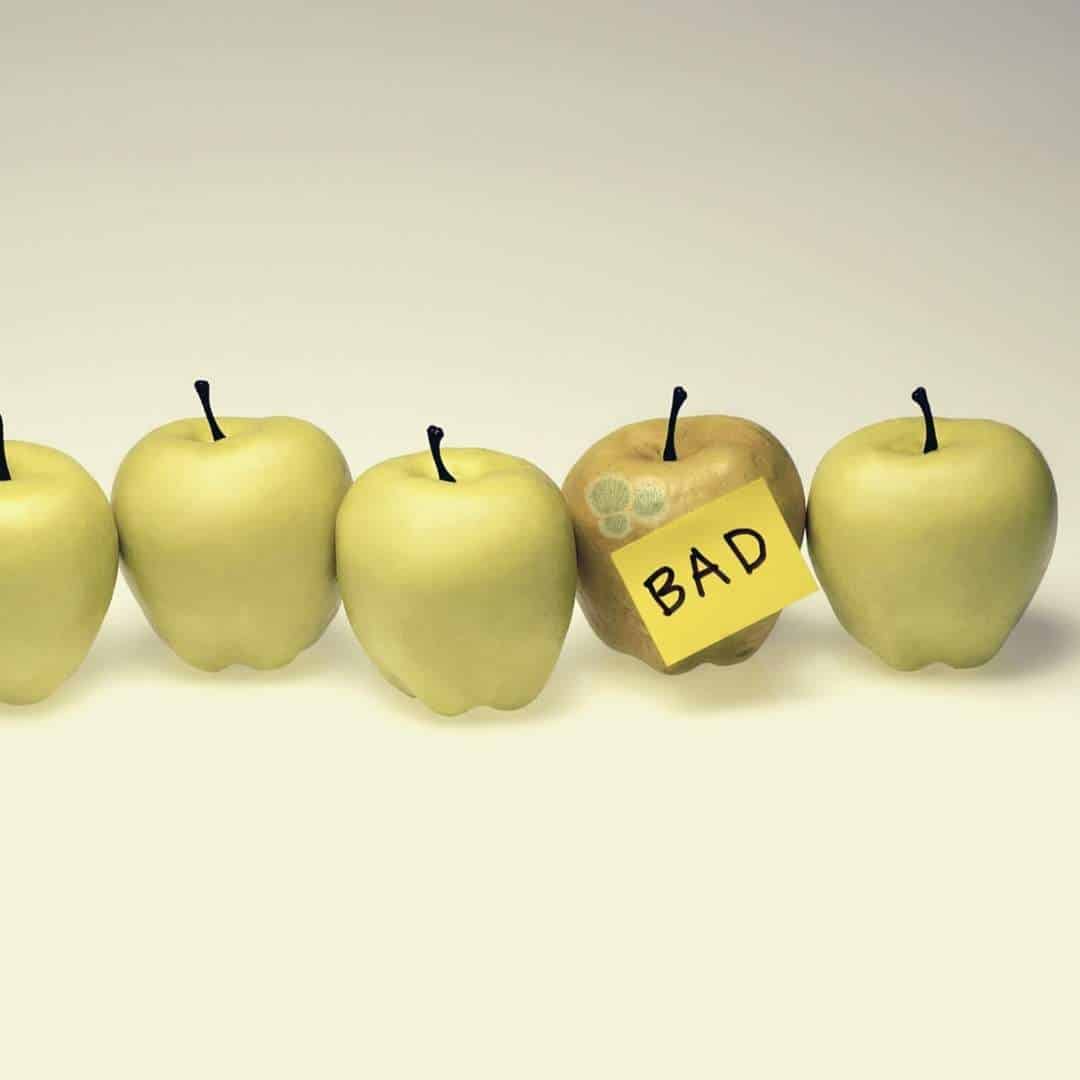
Most fruit molds will pass through your gastrointestinal tract with minimal negative effects, some types of mold found on fruits can produce what is called ‘mycotoxins’ which are poisons that can make you sick. Other varieties of fruit mold can cause moderate to severe allergic reactions in some unlucky people.
We will take a look at a few of those ‘mycotoxins’ in a bit.
If you or anyone you know is allergic to penicillin, for example, what they are suffering from is, in fact, an allergic response to a type of mold. These kinds of reactions don’t typically persist for very long.
However, In some individuals, they require immediate medical attention. If you start experiencing swelling of your face or throat or have trouble breathing, it’s best to call 911 or go to the emergency room.
Some people also report experiencing respiratory irritation and inflammation from exposure to food molds like the varieties that can sometimes be found on fruits.
When mold spores get into your lungs, they have the potential to wreak havoc. It’s even possible to develop bronchial problems and lower-respiratory issues like pneumonia from mold exposure.
Fear, not my curious knowledge-seeking foodie folks. Even these worst-case scenario situations are highly unlikely to happen to you. Just to reiterate, if you are concerned that you are having an adverse reaction, call your doctor.
Can’t I Just Cut The Mold Off?
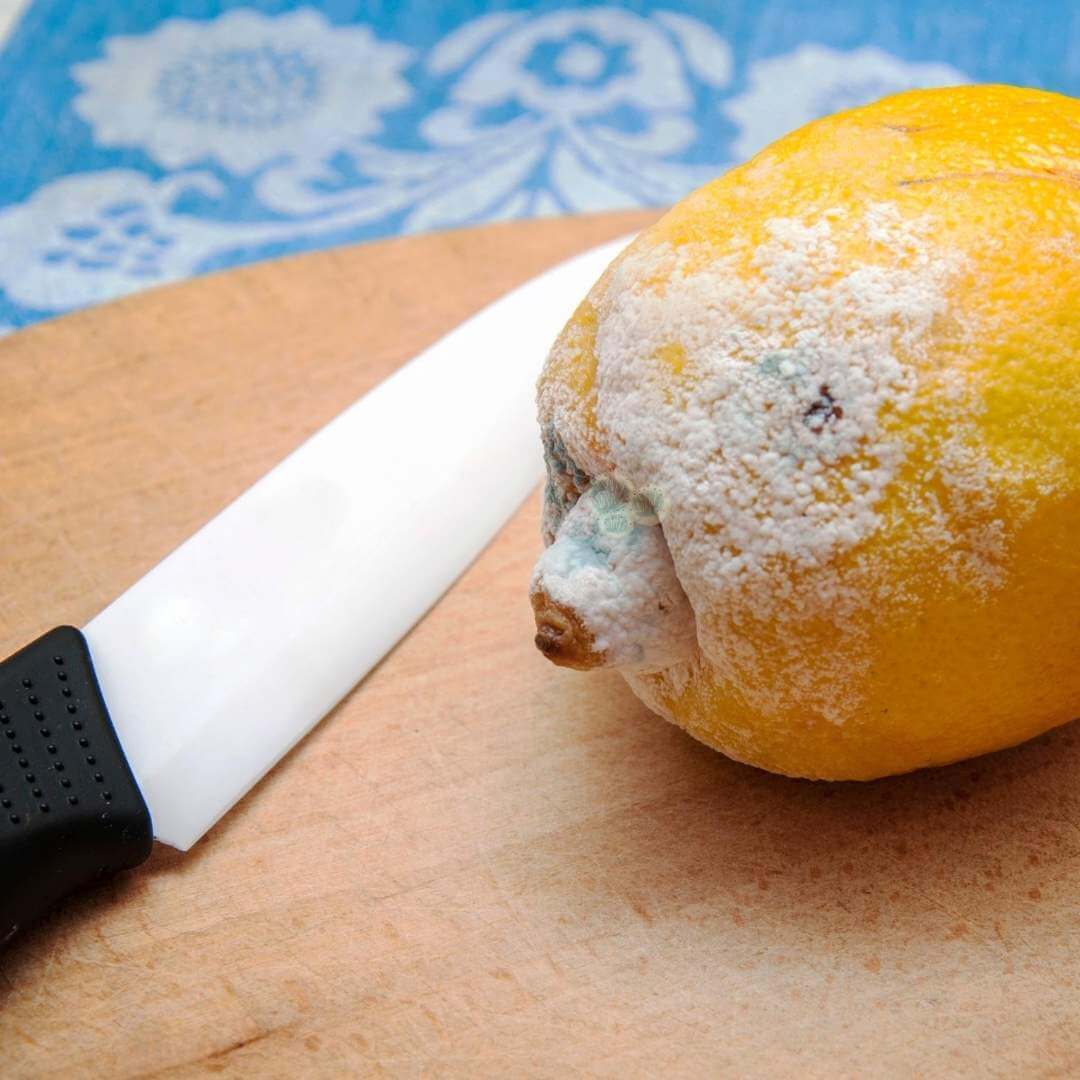
Well, I wish I could give you a simple Yes or No answer, but unfortunately, it’s not that simple. As we discussed earlier, when mold spores first land on your fruit, the first thing they do is dig in some threadlike roots.
Soft Fruits with high moisture content like strawberries, tomatoes, raspberries, black currants, gooseberries, plums, cherries, and grapes are more susceptible to those root-like threads invading the rest of the fruit. If you find mold on these kinds of fruits, it’s best to throw them out.
Hard Fruits such as apples, pears, peaches, and kiwis and fruits with peels like citrus fruits and bananas are less likely to have mold permeated throughout their flesh. You can typically cut off a 1-inch region around the offending moldy spot without suffering from any ill effects or off-putting flavor.
The best thing you can do if you are skeptical about mold you might find on fruit is just throw it out. Even though the risk associated with consuming a little bit of mold is pretty minimal, it’s always best to play things safe whenever possible, especially if your gut instinct is telling you so.
Which Fruit Molds The Fastest?
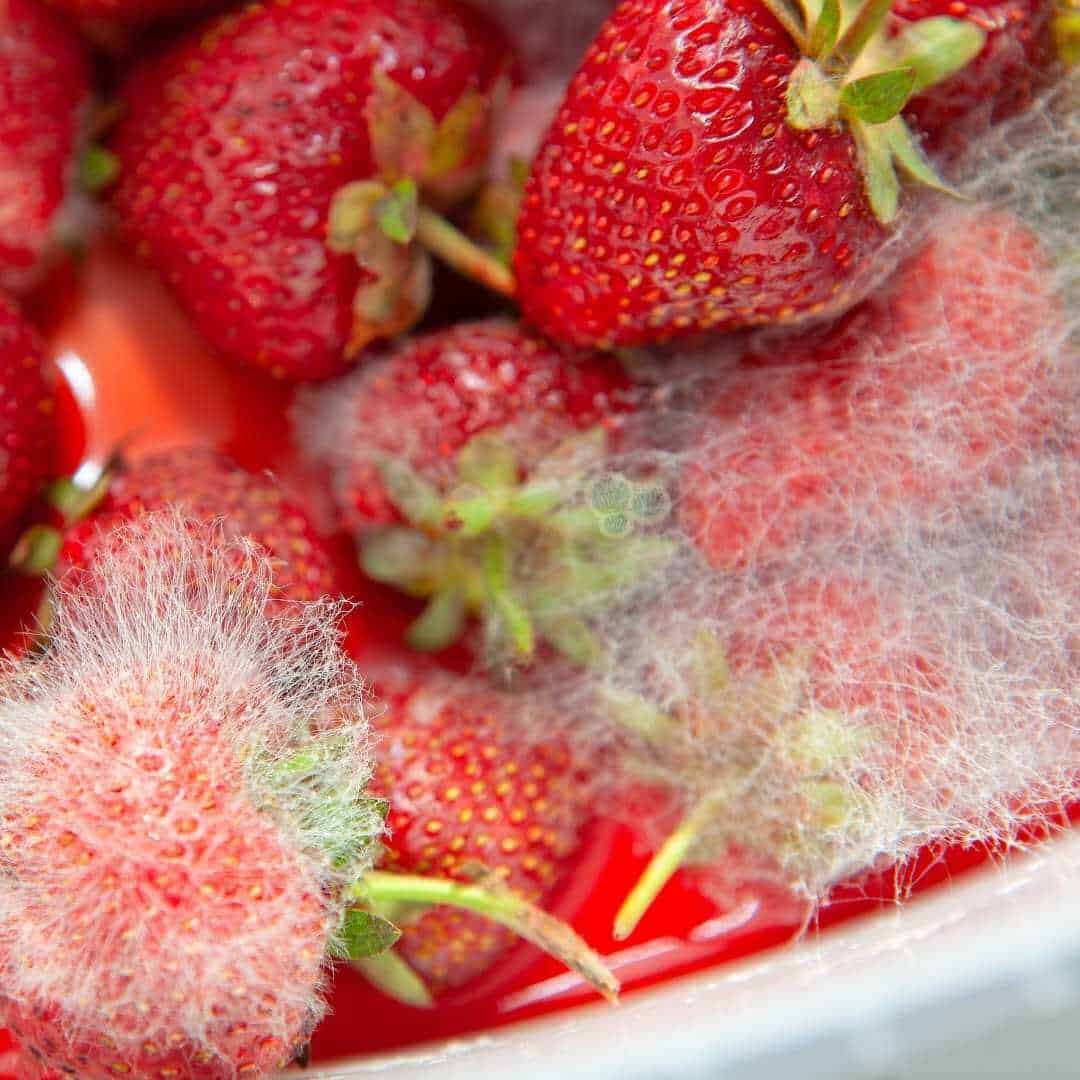
Some of the fastest molding types of fruits are berries. They develop fuzzy mold fairly quickly. Your first instinct when bringing home fruit might be to wash it immediately, but when it comes to berries, it’s best to wait until you want to eat them before washing them.
Rinsing will introduce moisture that will cause your berries to mold much quicker.
If one berry has a little bit of white powdery mold, that doesn’t mean the entire bunch is hopeless. Pick out the moldy berries before they have the opportunity to spread their spores to the rest. Powdery mold is far less harmful than mold that causes your berries to clump together.
When the mold roots spread throughout the fruit, they tend to make the flesh soft. A simple squeeze test can help identify the infected regions of your hard fruits that can still be salvaged.
Types Of Mold
According to the National Center for Biotechnology Information and the World Health Organization, the most common molds found in fruits are:
- Botrytis cinerea
- Rhizopus
- Alternaria
- Penicillium
- Cladosporium
- Fusarium
- Diplodia Natlensis
- Aspergillus
- Byssochlamys
Types Of Mycotoxins
According to Kansas State University’s College of Agriculture, the most prevalent mycotoxins to adversely affect humans through contaminated foods like fruit are:
- Aflatoxin
- Vomitoxin
- Zearalenone
- Fumonisin
- Ochratoxin
What Effects Do Mycotoxins Have?
Mycotoxins have a wide range of varying health effects. Some can be fairly benign, whereas others have more serious implications.
Grapes, for example, can be a breeding ground for Aspergillus, which in turn can produce the mycotoxin Ochratoxin. Lab studies have found that animals introduced to this toxin developed kidney problems and a weakened immune system.
Other mycotoxins like those present in apple mold have the potential to create quite a bit of gastrointestinal discomfort and can even be carcinogenic. Other varieties can also cause hormonal changes, birth defects, DNA damage, and neurological problems.
The WHO recommends inspecting and washing your fruits thoroughly before consuming them, eating a diverse diet, and discarding obviously moldy fruit to avoid the risk of mycotoxin poisoning.
Can I Do Anything To Prevent My Fruit From Molding?
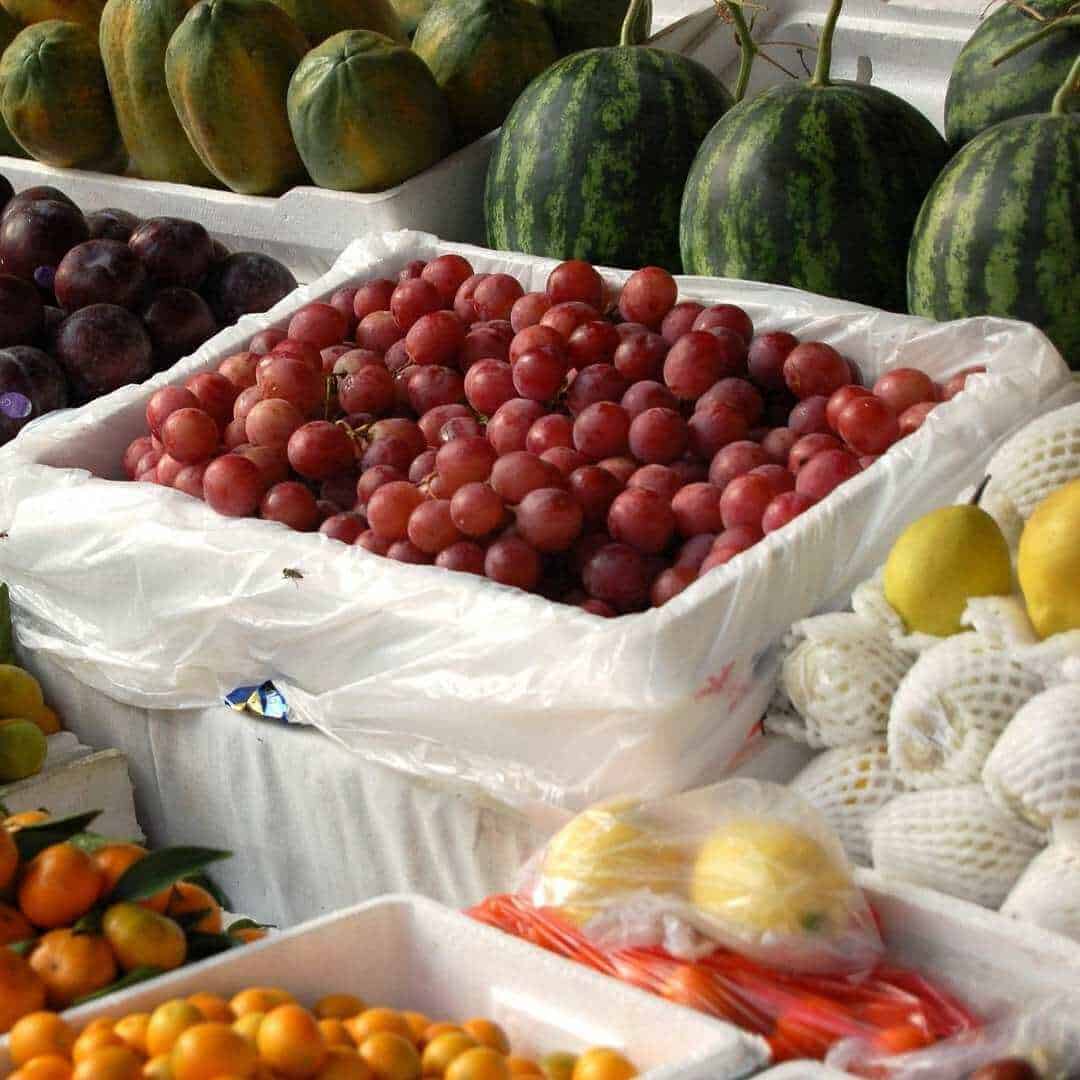
Most fruit mold is already present when it is brought in from the field. Chances are whether you have your own garden or you buy all of your fruit from the store, that it already has mold spores present that are just itching to start growing.
When you first harvest or buy your fruit, you can wash it with warm water, soap, and a splash of vinegar. Most mold -and bacteria – won’t survive such a wash. HOWEVER, as I already mentioned earlier, don’t wash your berries until you’re ready to eat them.
You may not have much control over bringing home spores from the grocery store, but you can consider the conditions that fungi thrive in and then avoid those variables as much as possible.
Mold prefers a warm, humid environment. So it’s best to store your fruit somewhere cool and dry. Mold also grows quicker in a well-lit environment. Wherever you store your fruit, make certain that it is reasonably dark.
Refrigeration can greatly slow the growth of mold, but it’s also a bit of a trade-off. Fruits that need to ripen like peaches and plums will ripen at a much slower pace when refrigerated rather than being at room temperature.
Read Also: Can You Eat Moldy Bread If You Toast It First?
Conclusion: Don’t Panic
Just as the famous words that are emblazoned on the cover of The Hitchhiker’s Guide To The Galaxy, there is no need to panic or fret when it comes to moldy fruit. If you accidentally consume a bit of it, you’re probably going to be just fine.
Although you might feel a little nauseous from the knowledge that you just consumed some fungus, it’s unlikely that your troubles will progress further than that.
Generally speaking, it’s good to avoid eating moldy fruit if it can be avoided. It certainly doesn’t taste too pleasing unless you enjoy the flavor of a wet basement. If you consume a sizable amount of fruit mold, you could cause yourself some gastrointestinal distress.
If you are the unlucky winner of the moldy fruit lottery and find yourself poisoned by mycotoxins, I urge you to seek advice from a trained medical professional such as a doctor or a nurse practitioner.
More than likely, however, unless you are practicing seriously careless food safety precautions, you’ll never have to deal with these kinds of issues.
Read Also: Are Really Brown Bananas OK To Eat?
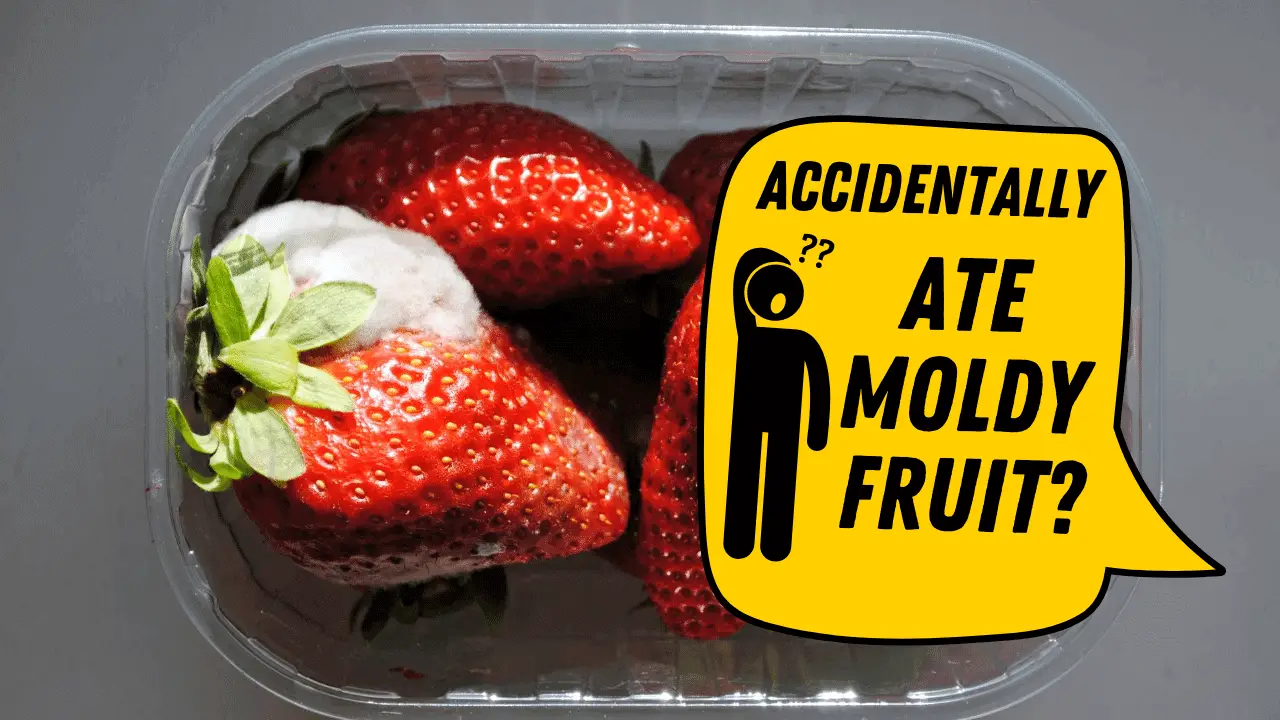
I was at the grocery store when I saw a moldy plum on the ground. I thought, “what a waste!” and picked it up to eat it. Once I ate it, I felt sick and started to vomit. The moral of the story is: don’t eat moldy fruit!